Indicator scoreboardEMU — First quarter real gross domestic product rose 0.2 percent and 0.1 percent when compared with last year. The increase was due solely to stronger net exports as exports rose while imports fell. Domestic demand dropped for the third quarter in a row, with all subcategories except government spending declining on the quarter. Private consumption fell 0.2 and gross fixed capital formation declined 0.7 percent. 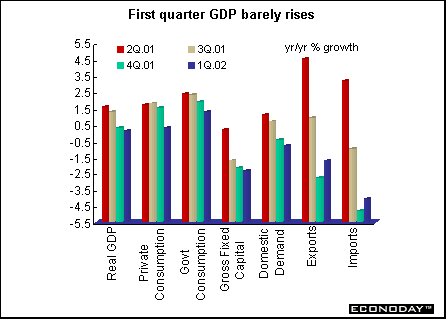 May flash harmonized index of consumer prices rose 2.0 percent when compared with last year, down from 2.4 percent increase in April. The ECB’s price stability definition is 2.0 percent. In order to compute HICP flash estimates, early price information provided by Germany, Italy and other members if available, as well as early information about energy prices, are used. 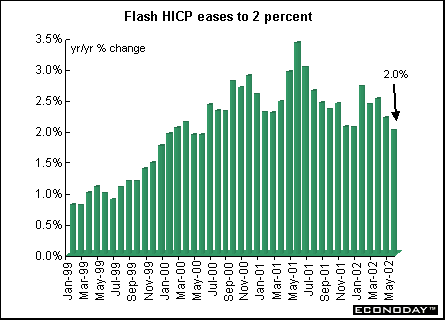 April fully adjusted M3 money supply jumped 0.7 percent and 7.5 percent when compared with last year. For the three months ending in April, M3 soared 7.5 percent when compared with the same three months in the prior year. M3 growth continues to soar above the ECB three-month money supply target of 4.5 percent. The ECB repeated that M3 growth continues to reflect, in part, the impact of financial market uncertainty following the September 11 terrorist attacks, which led to huge shifts into short-term assets by investors looking to boost the liquidity of their portfolios. 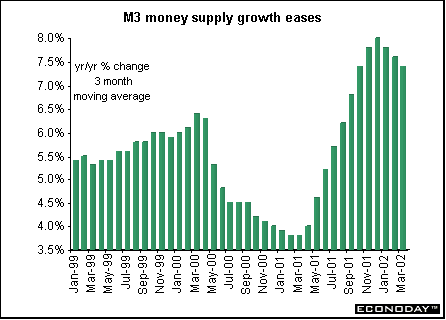 March seasonally and workday adjusted retail sales rose 0.3 percent in March, half the February growth rate despite the benefit of the early Easter sales season this year. When compared with last year, retail sales were up 2 percent. Sales for books, newspapers and other sales in specialized stores rose 1.0 percent while sales for food, drinks and tobacco rose 0.3 percent. However, sales for household goods fell 0.8 percent, while sales for textiles, clothing and footwear fell 0.2 percent.  Germany — April producer price index slipped 0.1 percent due to a sharp 1.1 percent decline in energy prices. When compared with last year, the PPI declined 0.8 percent. Excluding energy prices, PPI rose 0.2 percent and 0.3 percent on the year. May Ifo Institute's west German business sentiment index rose to 91.5 from 90.5 in April. Both the future expectations and current conditions sub-indexes rose. West German current conditions rose to 77.6 from 77.0 in April, while expectations also rose to 106.1 from 104.7 in April. East German business sentiment declined to 99.4 from 100.1. East German sentiment on current conditions slipped to 113.7 from 114.3 while the expectations index fell to 85.8 from 86.5. 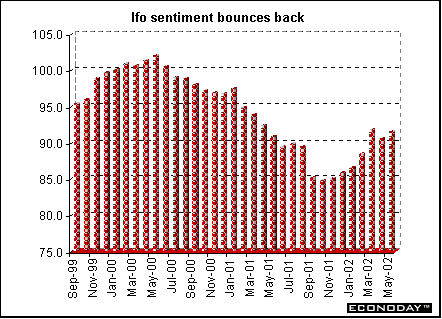 France — April seasonally adjusted International Labour Organization unemployment rate remained steady at 9.1 percent. However, the number of unemployed rose by 9,000. The ILO definition excludes jobseekers that did any work during the month. 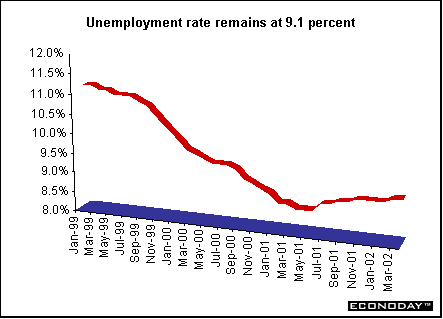 April producer price index rose 0.4 percent but was down 0.7 percent when compared with last year. Energy prices rose for the fourth straight month with a 2.1 percent spurt after jumping 3.4 percent in March. Excluding energy and agriculture, the core PPI inched up 0.1 percent but slid 0.2 percent on the year. Italy — April producer price index rose 0.3 percent but fell 1.2 percent when compared with last year. The April increase was due mainly to higher oil product prices. Oil products jumped 2.2 percent, while chemical products were up 0.8 percent. Britain — May seasonally adjusted Nationwide house price index rose 2.1 percent and 17.9 percent when compared with last year. Continued demand for property has been supported by high employment and low interest rates. 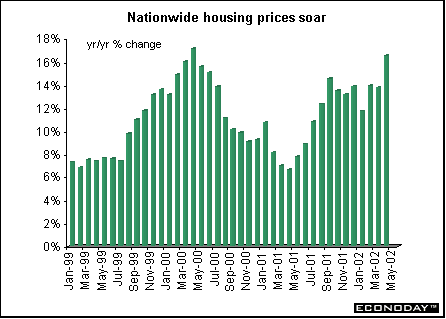 Asia Japan — April retail sales fell 4.1 percent from a year earlier, the 13th straight decline, indicating the mild export-led economic recovery currently underway hasn't been strong enough to filter through to consumer spending. Sales at large scale retailers fell 2.0 percent on the year, after adjustment for the change in the number of stores. A 7.4 percent slide in sales of clothing and accessories led overall retail sales down. Sales of summer clothing jumped in March due to unseasonably warm weather. April industrial production rose 0.2 percent, weaker than the 0.8 and 1.2 percent gains in March and February respectively. When compared with last year industrial production was down 6.1 percent. Electronics manufacturers boosted output by 3.9 percent on strong exports, particularly of electric parts. Shipments rose 0.8 percent, marking the fifth straight monthly increase, while inventories fell 1.6 percent, as producers continued to chip away at excess stocks. April nationwide consumer price index rose 0.3 percent but was down 0.9 percent when compared with last year. The core consumer price index fell 0.3 percent and 1.1 percent when compared with last year. Core nationwide CPI has fallen for 31 straight months. May Tokyo CPI rose 0.2 percent but dropped 1.2 percent on the year. Prices fell for electricity, as well as for leisure and educational durable goods. Core Tokyo CPI rose 0.1 percent compared on the month on higher clothing and gasoline prices and costs related to autos. April real spending by wage earners rose 0.9 percent from a year earlier. Wage-earner spending is an important gauge of personal consumption, which accounts for roughly 55 percent of gross domestic product. Spending increased on drinks and snacks during April's unseasonably warm weather. Seasonally adjusted propensity for wage earners to consume, a ratio that measures the amount of disposable income that went on household spending, rose to 73.6 percent from 69.6 percent in March. April unemployment rate held steady at 5.2 percent in April, indicating labor conditions remain unchanged after a slight improvement last month. The total number of jobless rose for the 13th straight month, increasing by 7.8 percent to 3.75 million when compared with last year. The flat jobless rate suggests the speed of deterioration in the labor market may be moderating slightly, but it is also partly due to a smaller working population. On a more positive note, the number of temporary and part-time workers rose for the fourth straight month, up 5.8 percent in April from the same month a year earlier. 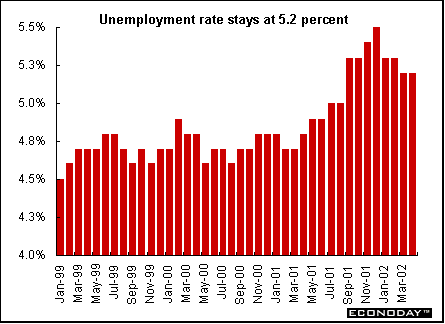 The seasonally adjusted ratio of job offers to job seekers, an indicator of labor demand, rose to 0.52 in April from 0.51 March. The ratio shows that 52 jobs were being offered for every 100 workers seeking employment in April. The ratio of new job offers to new job seekers fell to 0.90 from 0.94 in March. The new job offers ratio shows there were 90 new jobs for every 100 people newly seeking work. Americas Canada — First quarter gross domestic product rose 1.5 percent and 2.1 percent when compared with the first quarter of 2001. A hot housing market, a slowdown of inventory depletion, and a rebound of exports and manufacturing boosted GDP. The pace of growth was more than twice that of the previous quarter, and the best since the fourth quarter of 1999. Final domestic demand gained a solid 0.9 percent, after a flat fourth quarter. The chain price index for GDP rose 0.9 percent, halting two quarters of deflation. Business spending on plant and equipment edged down 0.3 percent in the first quarter. Cutbacks in construction of both engineering structures and non-residential buildings were a continued source of weakness. 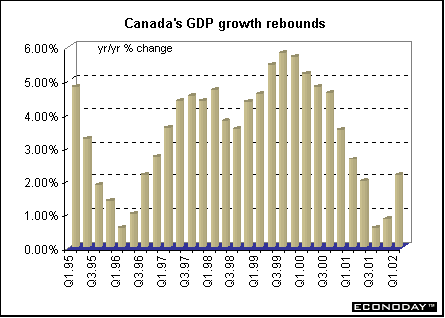 |